The EV Revolution Is Coming for Classic Cars Too. Inside the Soaring Demand for Electric Restomods.

The sound doesn’t match the picture. I’m driving a Porsche 911 of late 1980s vintage. Arrayed before me are its five big, clear analog driving dials, visible through the simple three-spoke wheel. The windscreen is upright for a sports car by modern standards, and the thin roof pillars let light flood in but would buckle fast in a rollover. Beyond the screen, the two long steel cannons bearing the headlights point directly down the closed runway, the car’s sloping hood slung low between them.
So far, so Porsche. But the guttural, unfiltered rattle-rasp of the air-cooled engine beloved by Porsche purists and central to an old 911’s appeal is entirely absent. Instead, there’s just a low, constant back- ground whirr. It doesn’t increase much when I bury the throttle, but the speed does, exponentially. This old car suddenly leaps forward 30 years, accelerating as quickly as the fastest Tesla—and too fast for your brain to process the torrent of visual information now being streamed at it. You just have to remind yourself that the runway was clear before you hit the “gas” and keep your foot to the floor for as long as you dare. It’s hilarious, frightening and deeply strange to anyone familiar with old Porsches: a 20th-century view with 21st-century noise and performance.
More from Robb Report
This Pristine Porsche 911 Turbo S Just Sold for a Record $1.3 Million at Auction
The Mercedes-Maybach S-Class Haute Voiture Is a High-Fashion Take on the Marque's Flagship
Electric Cars Can Help Lower Your Utility Bills, a New Study Suggests
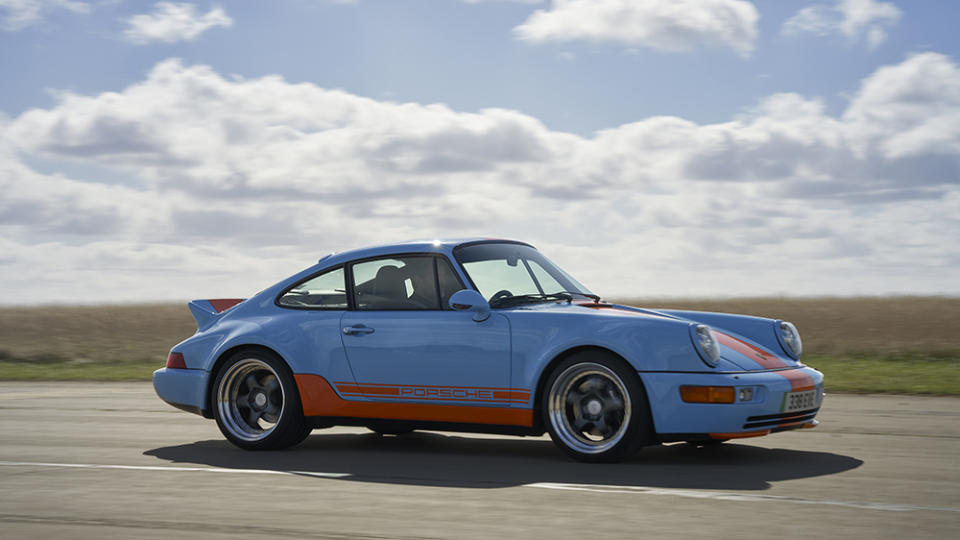
How does this incongruity make you feel? Some consider the idea of a desirable, collectible, important classic car having its engine stripped out and replaced with an electric motor as progress; others as sacrilege. Some see classic cars as art and as inappropriate to modify as the Mona Lisa. Others view them as more akin to architecture: beautiful but functional and in need of occasional rewiring and replumbing to suit the expectations of modern users. As one collector told me, you wouldn’t live in a fine Georgian house and still throw your sewage out the window.
The debate engendered by models like this Everrati 911 (above) is polarizing the classic-car world. Every social-media post featuring one attracts a slew of critics grousing, perhaps not unreasonably, that the engine is the heart of the automobile and that its removal diminishes the car’s appeal—not to mention depletes the remaining stock of a significant, historic model. One classic-car-world figure Robb Report spoke to said he wouldn’t buy an electric vehicle until forced to by legislation. Another said he wished companies in the vein of Everrati, producing electric classics, would just leave old cars alone.
Others clearly differ. Even with prices starting at about $310,000 (all prices at current exchange rates), including the donor car, you’ll wait 11 months just to get a build slot for an Everrati 911 and anywhere from seven to 14 months for the three other models it offers. At its rival Lunaz, based just 20 miles away at the UK’s Silverstone Grand Prix circuit, the wait is close to two years, despite production capacity for about a hundred cars per annum and prices that start at around $335,000 for an electrified classic Range Rover and extend well north of $1 million for a restored and converted Aston Martin DB6, including the donor car. Lunaz has taken investment from David Beckham, Oculus founder Brendan Iribe and the Barclay and Reuben families, two of Britain’s wealthiest, and it has already declined an opportunity to go public.
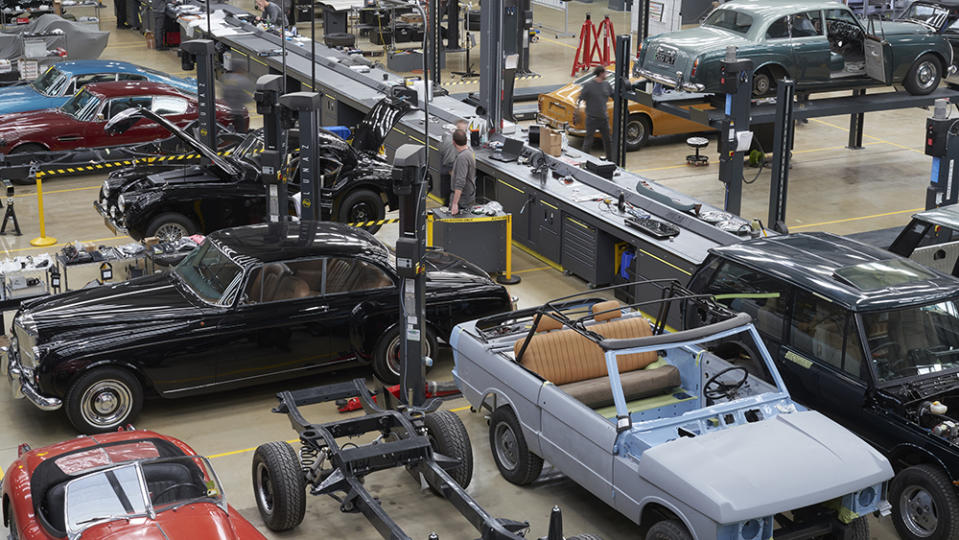
There are around a dozen credible start-ups now electro-modding around the world, including Zero Labs in California and Moment Motors in Texas. The United States already accounts for about half of Everrati’s sales—and growing—and, with a North American headquarters in Calabasas, Calif., it plans to expand its US presence in the coming months. Lunaz also intends to open facilities in the US. But the UK’s concentration of skilled vintage-car restorers has made it a locus for this new trend. In Wales, globally renowned Mercedes restorer Hemmels produces just 30 Neugeboren, or newborn ’50s and ’60s SLs, a year, each one taking 3,000 hours to refurbish with subtle modern upgrades to improve reliability and comfort, such as electronic ignition and Bluetooth audio systems. Now Hemmels has gone a step further and fully electrified the gorgeous Pagoda version of the SL, keeping the power, performance, weight and balance of the car almost stock. And there’s a particular expertise in electric drive systems in Britain’s Motorsport Valley, centered on the Silverstone circuit. Seven of the 10 Formula 1 teams, which all use high-performance hybrid electric drive as part of their powertrains, are based within an hour’s drive of Everrati and Lunaz.
So despite the haters, the demand is plainly there—and growing. But what’s driving it? Who is buying these things? Are they actually satisfying to drive? And do they represent the death of a single classic car, or the future of all of them?
I’m basically a recovering petrolhead,” says Everrati’s 51-year-old British cofounder, Justin Lunny. The serial fintech entrepreneur sold a business in 2016 and was looking for something to do next. “When I was 8, all I could think about were cars. But my daughter was a similar age when I exited that business, and she was genuinely worried about the Earth flooding. As a dad, that’s pretty scary. So, getting into something that involved both clean tech and cars was perfect. I know I’m not going to be the next Elon Musk, but it’s good to think you’re making a difference.”
Lunny found a ready market for his EV conversions among fellow tech entrepreneurs. Everrati’s first US customer was Matt Rogers, the 39-year-old cofounder of Nest, which Google acquired in 2014 for $3.2 billion. He’s now an Everrati investor and is already specifying his second electric 911.
“I went to see him to ask why he bought a car from a little start-up in rural England,” Lunny says. “Matt’s dad had the same model of 911, and he basically grew up in the back seat. He’d always promised himself one, but it had to be electric.”
“A lot of Bay Area tech people simply won’t drive combustion-engine cars again.”
-Justin Lunny, Everrati founder
Everrati operates almost virtually, out-sourcing the restoration of the entire car (bar the engine, of course) to established marque specialists and acquiring the electric drivetrain components from the best suppliers, which are often local. Its value lies in how well it integrates the two and in how easily the electric drivetrain developed for, say, a Mercedes-Benz Pagoda—its forthcoming conversion model—can be adapted to fit another classic car with the same front-engine, rear-wheel-drive layout, either as a regular model in the Everrati range or as a one-off conversion of a customer’s existing car.
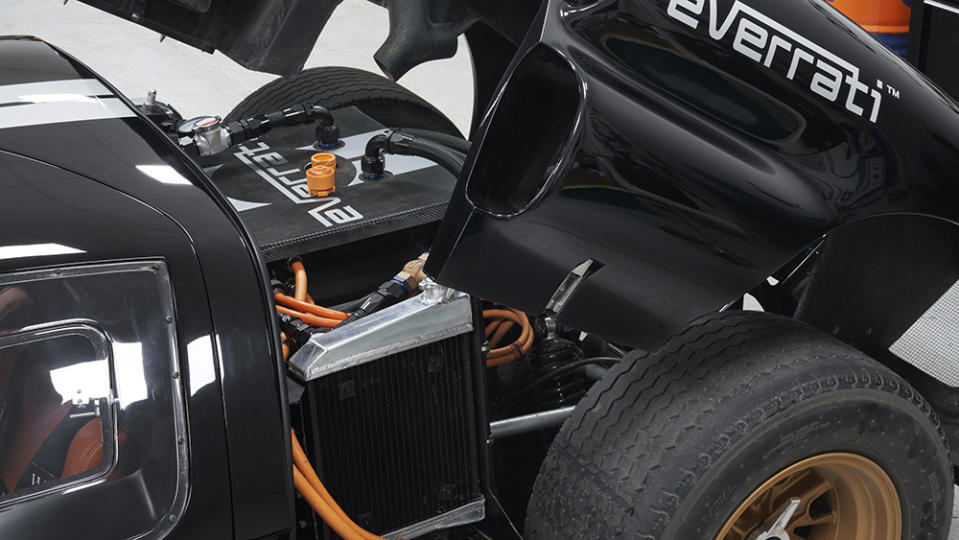
“There is a huge transference of wealth between generations coming, and that includes some vast car collections,” says Lunny. “The millennials inheriting these cars might not drive them if they have combustion engines, but we can convert them and help them continue to use them.”
Matt’s dad would feel at home in his son’s electric 911. The restoration is carried out by the Aria Group, which also produces Singer’s feted restomod 911s and builds concept cars for the major manufacturers. Mad electric thrust aside, it still drives like a 911, because it still is a 911. The center of gravity and weight distribution are pretty much the same, and the mass is only slightly less despite the weight of the batteries. The brakes and suspension have been subtly upgraded to cope with the extra pace, but in an entirely Porsche way. The 911’s edgy, rear-engine-plus-rear-drive dynamics are still there, as is the serious, deliberate heft of the steering and pedals. For me, the crazy pace compensated for the lack of noise and allowed me to enjoy more of the chassis’s talent, more of the time. The only thing I missed was the physical involvement of changing gears myself, but with so much torque available instantly from the electric motor, there’s just no need.
I loved it. You might not. But it’s harder to argue with an electric conversion of a classic car whose engine was never part of its appeal. Early Land Rovers, with their boxy, minimalist aesthetic and utilitarian credibility, are now hugely cool. But spewing particulate matter from the exhaust of a weedy, wheezy four-cylinder engine outside your kids’ school isn’t. The same goes for fighting a gearchange so vague you have no idea whether you’re in first, reverse or neutral while shoppers along London’s tony Kings Road look on. Land Rovers were always intended to be modified, and a reliable, easy-to-drive, emissions-free EV conversion in a perfectly restored body that you can use with the roof off and windshield flipped forward is deeply appealing. Everrati even leaves the Land Rover’s famous off-road hardware untouched should you want to go dune-bashing at the beach house.
Lunny says he tries to preserve the soul of these cars, and in both cases I think he has, though he might have tried less assiduously to preserve the Land Rover’s famously bouncy ride. It steers and stops far better than any other example I’ve driven, and my only reservation is the price: Can a simple farm vehicle that cost just £450, or roughly $2,000, when it was first launched in 1947 really justify a $185,000 price tag, plus the cost of the donor car, now?
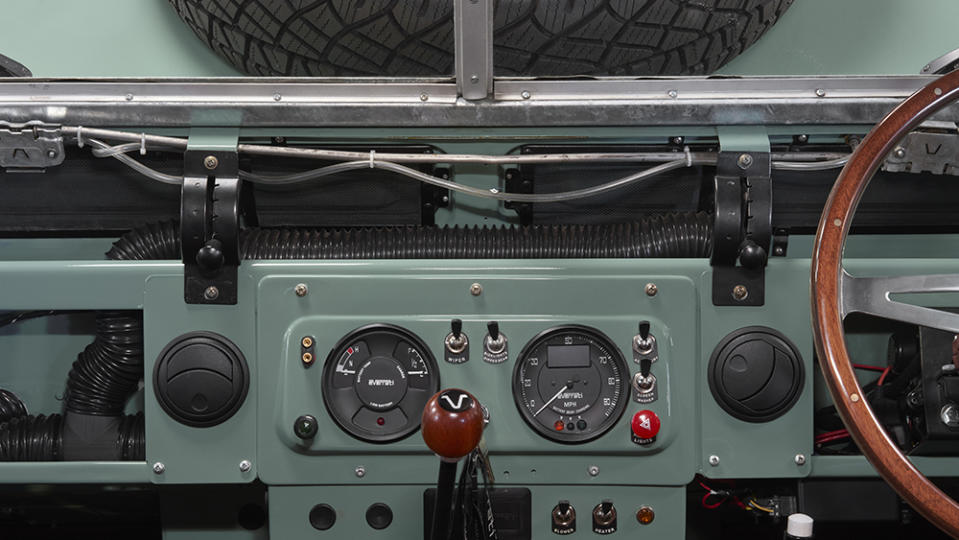
Things are done differently at Lunaz. Two internal windows in 35-year-old founder David Lorenz’s elegant boardroom overlook a pristine, spacious workshop. Here, almost every aspect of the restoration and conversion is handled in-house, and his impressive facility feels like a one-tenth-scale Rolls-Royce or Ferrari. More than 60 engineers, working under technical director Jon Hilton, who designed the Formula 1 cars that won world championships for Michael Schumacher and Fernando Alonso, map out every aspect of the EV installation on banks of CAD screens. In the stark design studio, with its dark-gray walls, polished-concrete floor and industrial fittings, Jen Holloway, who formerly headed Aston Martin’s bespoke Q division, leads a team that helps customers specify their builds “down to the last thread,” as Lorenz puts it. Some want their car to look exactly as it left the factory originally. Others come with their own ideas. One asked for leather in the shade of the cricket ball he arrived clutching. Another wanted a traditional-looking cabin that features zero animal products, including hide in the upholstery and wool in the carpet, which instead is made from plastic recovered from the ocean but is indistinguishable from wool to the touch. Holloway and her team send “mood boxes” with samples of the colors and materials to clients who can’t visit.
In the workshops, every car is stripped back to bare metal, and previous botched (but hidden) repairs are perfectly and painstakingly corrected by craftsmen using metalworking techniques that go back centuries. Unusually, the paint and trim are done in-house, too, and at the other end of the technological spectrum, even the batteries are assembled here, from modules into the full, armored packs.
From the boardroom you can see the bays where the cars are assembled—and the range of cars Lunaz offers. There are the more sober, formal 1950s and ’60s Rolls-Royces and Bentleys often commissioned by hotels, including a gold Silver Cloud originally owned by Sophia Loren. There’s a seductive, jet-black Jaguar XK120, the first car Lunaz offered, alongside a gloriously candy-colored trio of 1960s Aston Martin DB6s—comfortably Lunaz’s most expensive model—plus half a dozen early Range Rovers, its most recent.
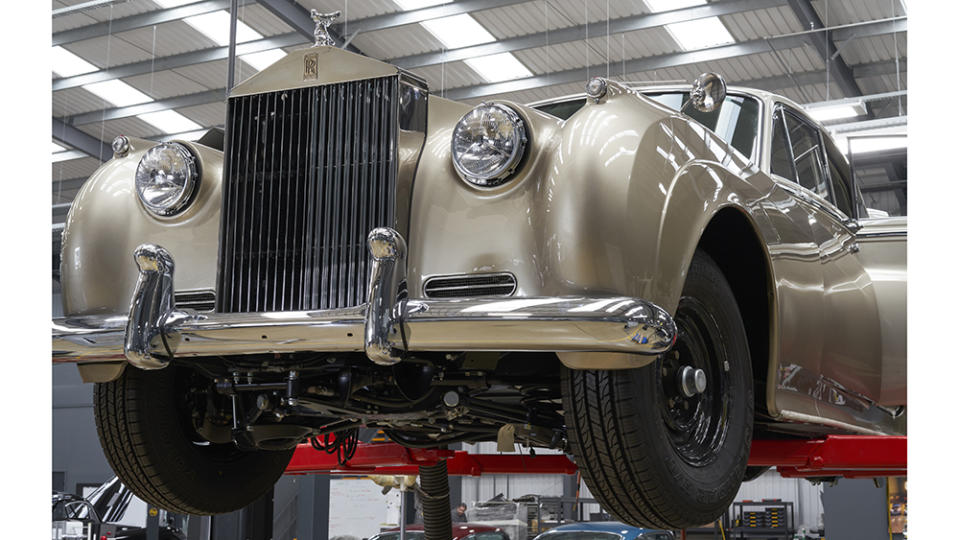
Lorenz says criticism of what he’s doing isn’t even a flicker on his radar and insists that serious collectors don’t see it as sacrilege. The first customer for one of his Bentleys owns one of the world’s most significant collections of prewar cars. Another has around 40 important models, and every six months or so they send another to Lunaz for conversion.
But most of his clients are new to classic cars, Lorenz says. “They come to us because until now they haven’t been able to buy a fully electric car from a marque like Rolls-Royce or an electric luxury SUV like the Range Rover. Nor do they have the opportunity to design their electric car exactly the way they want it, as they do here. Both of those things will come, of course, with cars like the Rolls-Royce Spectre. But that doesn’t harm us. It just makes it acceptable to be driving around in an electric Rolls-Royce.”
Nor does he have much time for those who think that an electric conversion forever ruins a classic car. All the combustion drivetrains removed are archived and stored for the owners (Everrati stores discarded engines at the owners’ request), and the cars aren’t modified in any way that would prevent the original engine from being reinstated.
“I’ve only ever had one client say that they didn’t want the original engine,” says Lorenz. “But I’ve stored it for them anyway, because it’s part of the car’s history and should stay with it. But no, I don’t think the combustion engines will ever be put back in. Why would you go to the effort of commissioning one of these vehicles and then reverse it?
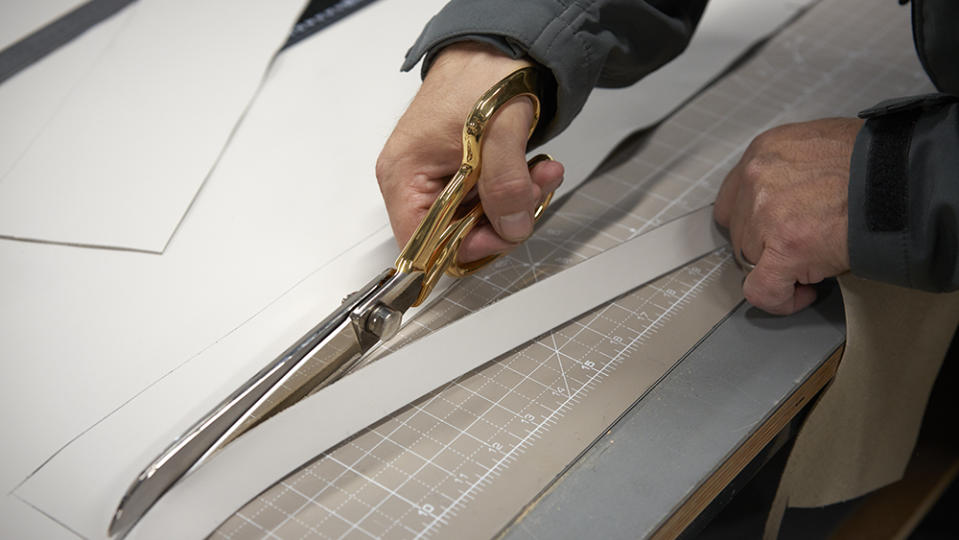
“These things have been around for 60 years, and I’d like them to be around forever,” he continues. “You can bring them back in another 60 years and do the whole restoration again. But in 60 years we just won’t be driving internal-combustion cars on the road at all. So we’re not destroying history. We’re preserving it.”
-David Lorenz of Lunaz
The world of high-end collectible cars is famously opaque. Owners usually prefer to stay in the shadows, and hard data on sales, prices achieved and shifting tastes and buying habits is hard to come by. It’s difficult to discern if the emergence of Lunaz, Everrati and their US counterparts indicates the beginnings of a genuine shift away from interest in classic cars, with their fussy, polluting internal-combustion engines, or whether their customers are self-selecting and not representative of a broader, deeper change.
James Banks thinks it’s the latter. The former McLaren production-car engineer led the marque’s bespoke program and handled the relationships between the factory and the owners of its now-fabled F1 supercar. He has since established LaSource, a virtual private members club that allows owners of the highest-end cars to trade among themselves in confidence, in addition to advising on collection building, restoration and bespoke builds and representing ultra-niche hypercar makers such as Gordon Murray Automotive. Collectors are known personally to Banks, and he doesn’t think they’re falling out of love with gas engines quite yet.
“We have been approached by companies making cars in this space to represent them,” he says, “and while we haven’t started working with one yet, I have visited and found them to be very impressive, and in some cases as good as a small luxury carmaker. I think they have a bright future if the cars are done well and safely.
“But the buyers in general are not people I know,” he continues. “This is a new audience. This trend is very much led by buyers on the US West Coast. California is ever more enthralled by the electric car, and there may be some virtue signaling here. The strong dollar helps, too, if you’re ordering from the UK.”
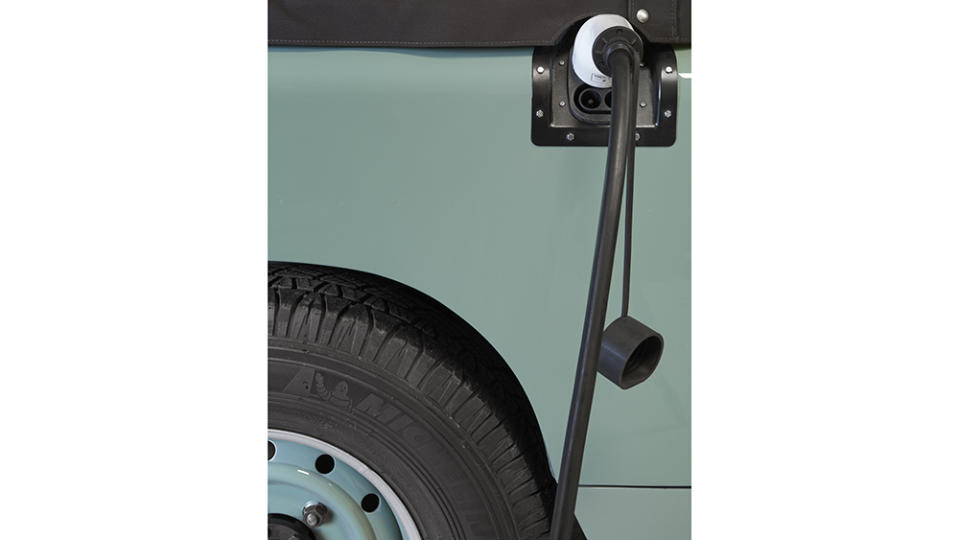
For the moment, Banks says his “petrolhead audience isn’t really changing—they might be transitioning to EV as their daily drivers, but for the weekends, they still want combustion.”
Of course, that’s assuming that the noise and feel of a gas engine are central to the appeal of the car in question. They aren’t always, nor do owners always want to drive themselves. I take a seat in the back of a long, elegant 1960s Rolls-Royce Phantom V. When this car was new, there were few more glamorous, luxurious ways to travel on land. Compared to a modern Phantom, there are few gadgets to play with, the interior composed of silken, pale-gray leather upholstery, deep lambswool rugs and, in the console between my chauffeur and me, a fine walnut drinks cabinet containing ceramic tequila decanters—a bespoke addition. But in a vehicle’s cabin, space and light are the greatest luxuries of all (and are increasingly difficult to come by in a modern automobile, hampered as it is by the design strictures of global pedestrian-protection regulations), and this classic Rolls has both in abundance. I can stretch my legs out in front of me. The glasshouse is vast and the pillars supporting the roof are narrow, allowing sunlight to flood the interior, while the view out to the Spirit of Ecstasy ornament, far ahead of me at the end of that regal procession of bonnet, is uninterrupted.
Exactly a week after visiting Lunaz, I’m at Rolls-Royce’s headquarters watching the cover being pulled from Spectre, its first official electric car. A Rolls was always meant to deliver massive thrust from prodigious torque in near silence, and you simply won’t miss a petrol engine in the Spectre—or the Lunaz, which got there first. This time, the sound and the picture are in perfect sync.
Best of Robb Report
The 15 Best Travel Trailers for Camping and Road-Tripping Adventures
The Chevy C8 Corvette: Everything We Know About the Powerful Mid-Engine Beast
Sign up for Robb Report's Newsletter. For the latest news, follow us on Facebook, Twitter, and Instagram.

